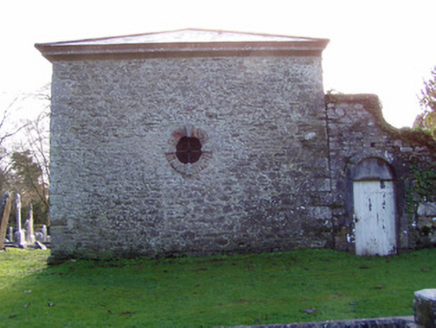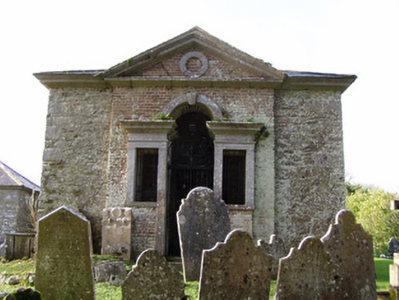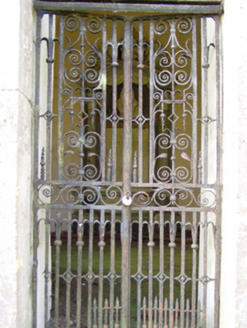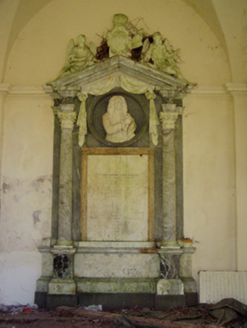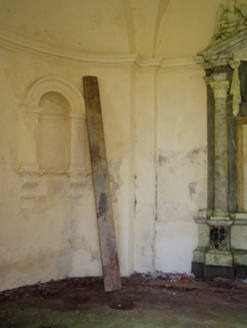Survey Data
Reg No
20804006
Rating
Regional
Categories of Special Interest
Architectural, Artistic, Historical
Original Use
Mausoleum
In Use As
Mausoleum
Date
1750 - 1755
Coordinates
183599, 93306
Date Recorded
04/10/2006
Date Updated
--/--/--
Description
Freestanding rectangular-plan mausoleum with crypt beneath, built 1753, having single-bay lean-to addition to rear (west). Façade has pedimented breakfront with carved limestone surround and with blind oculus with limestone surround to pediment. Hipped slate roof, with carved limestone eaves course to front and side elevations. Red brick walling to breakfront and coursed rubble limestone walls elsewhere. Oculi to side elevations having brick surrounds with limestone voussoirs dividing surround into quarters. Venetian-style entrance with tooled limestone surround, having cornices to sidelights and round-headed arch to central doorway with raised keystone, and steps. Round-headed door opening to north elevation of addition, leading to crypt, and having tooled limestone surround and timber battened door with ornate wrought-iron hinges. Decorative wrought-iron grilles to openings throughout. Groin vaulting and tiled floor to interior. Elaborate carved marble monument to interior, set into round-headed recess and flanked by similar in side elevations of space, having moulded imposts and impost course. Side elevation recesses have round-headed niches with moulded archivolts and sills supported on moulded brackets. Monument is an aedicule framed by Corinthian-style engaged columns, having open-bed pediment with swag below and featuring sculpture of male upper torso set into roundel, and inscribed plaque. Urn to apex of pediment flanked by angels. Located in graveyard to east of roofless Castlelyons Church of Ireland church, with second mausoleum to south-west.
Appraisal
This mausoleum, built for the fourth and fifth earls of Barrymore, well maintained. The building exhibits many interesting architectural features, in particular the pedimented breakfront and the fine Ventian-style entrance. The tooled limestone work is of good quality, as are the grilles to the openings. The elaborate sculpted monument to the interior was carved by David Sheehan and John Houghton and is of high artistic merit. It is set off by the relatively simple render detailing to the interior.
